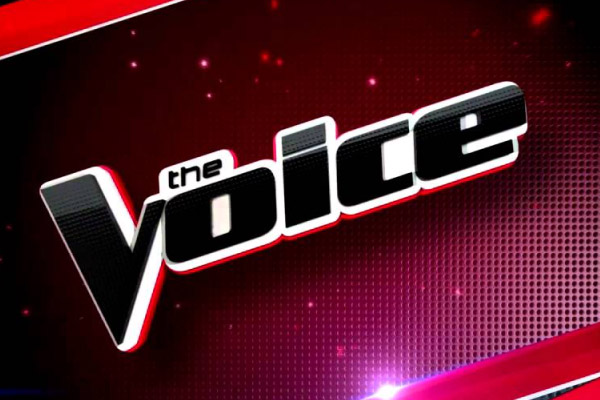The 10 Elements of a Compelling Blog
We’ve been told time and again that content is king. Badly written content, however, has become a dime a dozen online that it somehow lost its royal value.
So, my dear fellow writers, the 64,000-dollar question is: How do we create blogs or content that stands out from the crowd?
In finding out how to create articles that convert, we’ve compiled what we think are the 10 most important elements a compelling blog should have:
1. THE RIGHT VOICE
Use the right voice. Writers generally use “we” to empathize with readers. The use of “we” to establish rapport with the audience is fine, but the entire blog shouldn’t be written using the first voice (I, we, us).
Write the article as though you’re talking to someone in the same room, like what you do when you’re posting on social media. Address your audience using “you”. On the other hand, blogs written in the third person often sound impersonal, not to mention, boring.
Establishing the right voice leads to the overall tone of your blog.


2. THE RIGHT AUDIENCE
Knowing your target audience is one key element to creating a blog. Accurate targeting is already winning half the battle.
Here are crucial things to think about:
- Who will want to read your blog?
- Are they seeking professional information and discussions or just fun and humor?
Once you’ve established your audience, zero in on just ONE person. For instance, you are writing about used car buyers. Your audience could be family-oriented people such as moms and dads. You could also write for singles who still can’t afford to buy a brand new car, like college students.
Here’s a useful tip: try to think of someone you know who badly wants to buy a car, but can’t afford a new one. How about a co-worker? Start writing your blog focusing on your co-worker. What would they do if they were to read an article about the perks of buying a used car? Would they find tips on looking for a good car dealership useful?
3. ALTRUISTIC
Most readers will skim through your blog first. Once they sense that the content is sincere, they will most likely be enticed to read the rest of the article and click on the links you provided. Better yet, they may just share your article on social media!
As blogs are like mushrooms sprouting everywhere, altruism has become one of the more important elements in blogging. Readers have become smarter, mind you. They will know if your article is chock-full of crap. They can always Google the facts, remember?
Get your facts straight with reliable sources. Your readers will love you for it.


4. UNIQUENESS
With hundreds of thousands of blogs written every day, originality has become a very expensive commodity. Whatever you have in mind may already have been written repeatedly. If your topic isn’t original, at least have a unique approach.
Do not even bother to plagiarize. You don’t want to kill your career.
Don’t just rehash news and talk about things the same way that others do – dare to be different, play the devil’s advocate, look for new angles in stories, translate the news for your readers in layman’s terms and help them to work out how it impacts them and so on and so forth.
Instead of writing how they can fix their roofs, why not write instead how to protect the roofs against the elements, or what happens if they ignore a leak? Better yet, direct them to how and where they can find low-cost, but durable alternatives to the roofing system they’re using?
5. MASS APPEAL
Your blog should have mass appeal. It should be understood by many, embraced by a lot and clicked by thousands. It doesn’t matter who you’re writing for; the most important element of a compelling blog is appeal. If only a handful could understand what you just wrote, do you think it will get shared on social media?
Write using a mix of original and curated content. Stop writing like you’re trying to sell something. Instead, offer a solution to something that bothers your target audience. Search on social media if you want to know more about the issues of your target audience. Often, they talk about these online and seek help from friends, contacts and their wider networks. Chances are your blog might be the answer they’re looking for! How awesome is that?

Write one idea per paragraph. Having too many things going on is a sure way to lose the interest of readers.
Engage them with appropriate headings and well-written ideas. Writing down details in list form is also recommended, as it makes the reading more scannable. Why do you think recipes use the list type of content?
6. WELL RESEARCHED
Successful bloggers read a lot to stay updated on their topics and the blogosphere as a whole. Read trending news on social media. You cannot just make up something out of thin air. You need to have facts. You need to have sources.
So, how do you do that? Read books. Read newspapers. Read pages on reputable websites.
Read. Read. Read.
7. SUBSTANCE
This author said it best. The highlights are worth reading, sharing and remembering. If you want to improve your writing and add substance to your blog, keep the following in mind:
- Write effectively. What you write should be useful to others.
- State your purpose clearly. The audience should know what they’re reading about from the get-go.
Don’t be repetitive. - Have the right style. The right choice of words can mean the difference between a simply factual statement and an unforgettable one.


8. THE RIGHT LANGUAGE
Make sure that you write according to your target audience’s region. Know their culture, traditions and customs. Americans have 401(K) plans; Australians have superannuation. They may be similar, but they are not the same. So save your breath, do lots of research, and don’t discuss 401(K) to Australian readers.
Always use the appropriate expressions, idioms and terminologies. Take note of the differences among Australian, British and American English. Consult the dictionary. The dictionary is your friend.
9. CALL TO ACTION
In the last part of your blog, add a call to action. Is there a particular page you want the readers to check out? Are you writing about a product? Though it may look like a blatant marketing piece, it wouldn’t hurt to direct them to that page. The readers have the option not to click on it anyway if they don’t want to; chances are they will still click out of curiosity.


10. WELL STRUCTURED
Remember, no matter how well researched your blog is, or how honest it is, if it’s not presented well, then you better forget about writing. It’s like preparing a gourmet meal and forgetting about the proper plating. It’s all about presentation, people!
First, you need to have a good title. The title makes or breaks the article. With boring titles comes the assumption that the blog is going to be…boring!
To have a good and engaging title, practice PINC:
- Titles that make a PROMISE
- Titles that invoke INTRIGUE
- Titles that identify a NEED
- Titles that state the CONTENT
Next, pay attention to the presentation of your details. Practice the inverted pyramid:
- First paragraph should have the most important information: the who, why and what of the topic.
- Second and third paragraph should discuss the details, pros and cons, and options (if any) for the readers.
- Last paragraph should be the call to action part (if there’s a need to do so) or a nice wrap up of the article.

There you go folks. Remember these ten important elements and you’ll never go wrong.
Do you have any ideas you want to share with us? We’d love to see your comments below!